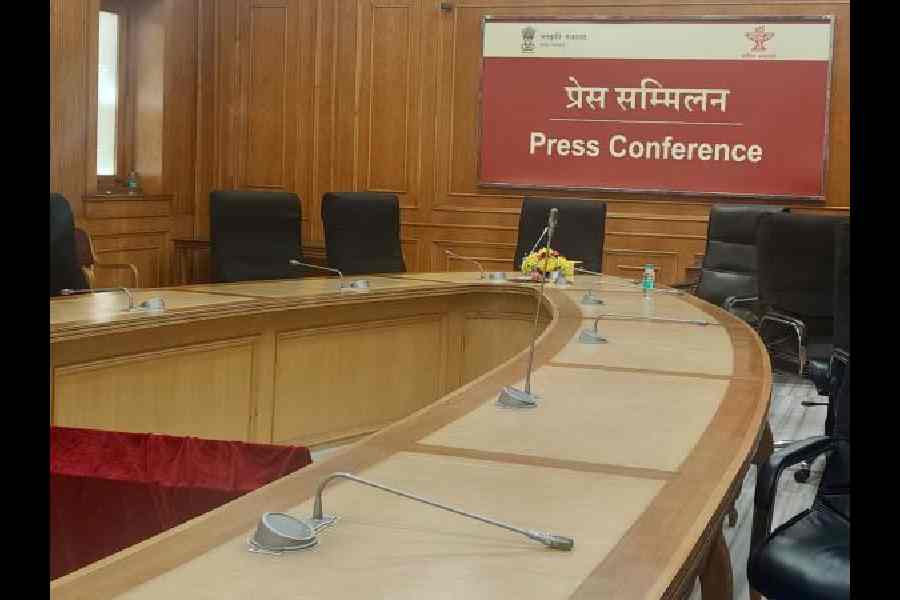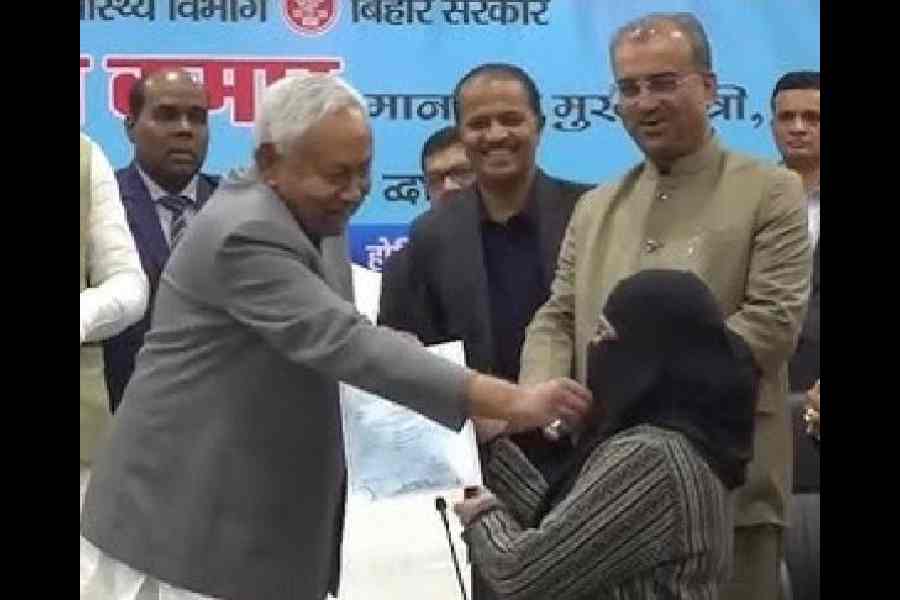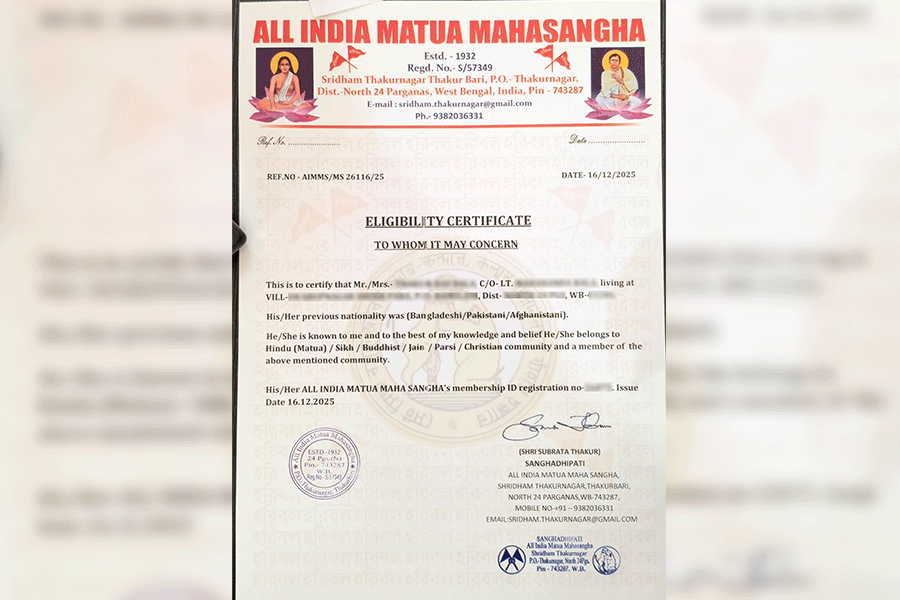 |
| Labourers work to protect the Pentha coastal embankment at Rajnagar. Telegraph picture |
Kendrapara, Sept. 1: Aware of impending danger, Orissa government has woken up to protect a highly vulnerable coastal embankment and to save a cluster of thickly populated human settlement at Rajnagar from possible ingress of tidal waves.
Mighty tidal waves had smashed Pentha coast under Rajnagar tehsil triggering cracks in the 700-metre-long embankment on August 29-30. State government officials said work to save the embankment from cave-in was continuing on a war-footing basis.
The strategic embankment, which has emerged as a time-tested buffer against the sea surge, acts as a critical protective cover for large areas of Rajnagar tehsil. As cave-in of the embankment would lead to sea water engulfing at least six gram panchayats, the project to strengthen the embankment with geo-synthetic tube technology is being undertaken under Integrated Coastal Zone Management Programme (ICZMP).
“To ensure safety of villages that now lie in danger following weakening of the Pentha embankment, temporary measures such as installing timber stumps and sand packing are now going on in full swing. These measures to prevent sea erosion can check the waves for some time. But it is not a permanent solution to the problem,” said Jugal Kishore Tripathy, executive engineer, saline embankment division.
Till the World Bank-funded ICZMP geo-synthetic tube project gets under way, such temporary steps were the sole option left with saline embankment personnel to tame the advancing sea and tidal waves. Indian Institute of Technology, Chennai, which was providing technical expertise to Orissa’s first anti-sea-erosion project, had suggested the launch of the project during mid-2012, said an official of the saline embankment division.
“Temporary repair of the 700-metre-embankment is continuing on war footing. The vulnerable portion forms part of the 15-km-long coastal embankment that had come up during 1971 in the aftermath of a devastating cyclone. As a foolproof safety measure to check the sea, another 300-metre retard embankment has been put up. This barrier is safe and free from tidal waves’ incursion,” said Tripathy.
“The administration is aware of the gravity of the situation. Populous gram panchayats such as Dera, Brahmanasahi, Kurunti, Gupti and Rajnagar are exposed to the threat of tidal ingress. That is why work is progressing round-the-clock to strengthen the old embankment,” said Pradipta Kishore Pattnaik, collector of Kendrapara.
Besides Satabhaya coast, Pentha shoreline is worst hit by sea erosion. Massive erosion in recent times had pressed panic buttons because of strategic location of Pentha. In the event the said embankment caves in, sea would sprint towards thickly populated human settlements and Rajnagar block headquarters.
During heavy rain and low-pressure downpour, the sea roars and its force wreak havoc in coastal villages. As many as six villages near Pentha were eaten up by sea in the cataclysmic cyclonic waves of 1971 when a population of 1,200 from Jaudia, Gohipur, Ichapur, Baunsagada, Goladiha, and Sasana were washed away.
“The situation here is grave. Engineering personnel and technical experts are pressed into service to save the embankment. At present, work to invigorate the embankment is going on round-the-clock to avert impending disaster,” Pattnaik said.











